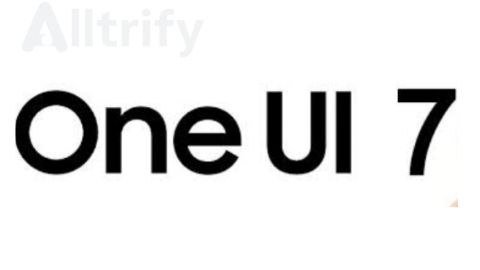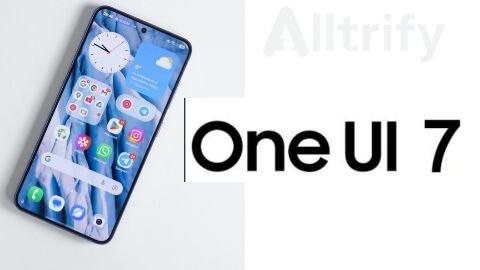Table of Contents
Introduction to Samsung’s Update Strategy
Understanding Samsung’s approach to software updates is vital for consumers who prioritize device longevity and performance. The company has developed a structured update strategy centered on the Android operating system, committing to delivering four years of software support for a majority of its devices. This policy aligns with Samsung’s goal to provide an improved user experience over the product lifecycle, significantly enhancing the value of its smartphones and tablets.
Samsung’s Android update policy is particularly noteworthy in a rapidly evolving tech landscape, where device obsolescence can occur swiftly. By promising a minimum of four years of software updates, including major Android versions and security patches, Samsung positions itself as a leader in software longevity. This update commitment extends primarily to flagship and mid-range devices, while entry-level models are generally excluded from such comprehensive support. The latter often receive fewer updates, which is a common industry practice across various manufacturers.
The introduction of One UI 7, based on Android 15, represents Samsung’s latest effort to enhance its devices’ features and usability. One UI aims to provide a user-friendly interface while incorporating the latest innovations from Google’s Android ecosystem. As the tech community anticipates the transition to Android 16, a significant question arises about how current devices will adapt to this new version and what this means for users still using older models. This contextual framework emphasizes the significance of Samsung’s update strategy, which not only aims to ensure compatibility with newer software but also signifies the company’s commitment to maintaining a robust ecosystem of devices in the market.
Android 15 and One UI 7 Overview
Android 15 introduces a variety of innovative features and improvements, one of which is the highly anticipated One UI 7 from Samsung. This update not only focuses on refining user experience, but also enhances the overall performance of supported devices. Users can expect a more intuitive interface, with design elements that prioritize accessibility and usability. The integration of robust privacy controls is another significant advancement, ensuring users can manage their data with greater accountability.
One of the key enhancements in One UI 7 includes updates to multitasking functionalities, enabling users to run multiple applications side by side seamlessly. Coupled with enhanced widget capabilities and customizable elements, these features are designed to create a more personalized experience. Additionally, Android 15 brings forth improved battery management systems through machine learning, allowing devices to optimize power consumption based on daily usage patterns, thereby extending battery life.

The timeline for the rollout of One UI 7 is anticipated to begin in early 2024, with flagship devices being the primary focus for the initial launch. Samsung has confirmed that models such as the Galaxy S23 series, Galaxy Z Fold4, and Galaxy Z Flip4 will be among the first to receive this update. However, the release of One UI 7 also signifies a turning point for older Samsung models, as this update may mark the end of major operating system upgrades for certain popular devices. Instead of new Android features, users of these older devices can expect to receive vital security updates to ensure device safety.
As Samsung embraces Android 15 and One UI 7, users can look forward to an enhanced user experience, reflecting the company’s commitment to providing cutting-edge technology while simultaneously acknowledging the need to phase out support for older hardware.
Expiring OS Update Support for Selected Models
As the landscape of mobile technology evolves, Samsung has announced the cessation of OS update support for several Galaxy models. Among the most notable are the Galaxy S21 series, the Galaxy Fold, and Flip devices, all of which have enjoyed considerable software support since their launch. However, this support is set to taper off, heralding a significant transition for these devices as they enter an end-of-life phase.
The Galaxy S21 series, which debuted with Android 11, was expected to receive three years of major updates. As the timeline progresses, users can anticipate that these devices will reach the limit of their support with the rollout of One UI 7, based on Android 15. Once this update is concluded, users may no longer receive essential security patches and improvements, establishing a potential vulnerability for those who continue to utilize these devices.
In a similar vein, the Galaxy Fold and Flip models were lauded for their innovation in the foldable segment. Despite being captivating options for technologically advanced users, these devices will also be impacted by the expiration of OS update support. The transition to unsupported status not only affects the availability of new features but also raises significant concerns regarding security. Without timely updates, users may find themselves exposed to new vulnerabilities and threats.
Moreover, the discontinuation of OS updates can also result in compatibility issues with newer applications that require more recent software versions to function effectively. Consequently, users of these devices may experience limitations in app performance and functionality over time. Understanding these implications is crucial for Samsung users as they navigate their options in the ever-changing technology ecosystem, especially considering the importance of maintaining security and optimal performance in a mobile device.
Looking Ahead: The Future of Samsung’s Software Updates
As the technology landscape continues to evolve, Samsung’s software update strategy is bound to adapt in response to the rapid development of mobile operating systems. With the anticipated release of Android 16, there are significant implications for Samsung’s future approach to software maintenance and enhancements. Historically, Samsung has committed to providing a comprehensive update service, ensuring that its devices remain equipped with the latest features, security patches, and overall improvements.
Samsung has established a reputation for delivering timely updates, often aligning its One UI versions with new Android releases. This synergy presents both a challenge and an opportunity as Google rolls out Android 16. Future adaptations may include a more refined approach to customizing the user experience while maintaining compatibility with new core functionalities introduced by Google. It will be crucial for Samsung to balance innovation with the stability that users expect from their devices.
Moreover, a significant aspect of software updates is maintaining security. Users today prioritize device longevity and security, and there is a rising expectation for manufacturers to support hardware beyond just major Android version upgrades. Samsung might enhance its commitment to offering monthly security patches for older devices, potentially extending support timelines to reinforce device reliability.
Additionally, the prospect of adopting new technologies, such as AI-enhanced features and advanced privacy options, will influence how Samsung designs future updates. Embracing these advancements will not only improve the user experience but also strengthen Samsung’s competitive positioning in a crowded market.
In conclusion, as we look to the future of Samsung’s software updates following One UI 7 and Android 15, there are clear pathways for evolving device support strategies, focusing on security and usability enhancements that are essential for maintaining user trust and engagement.





